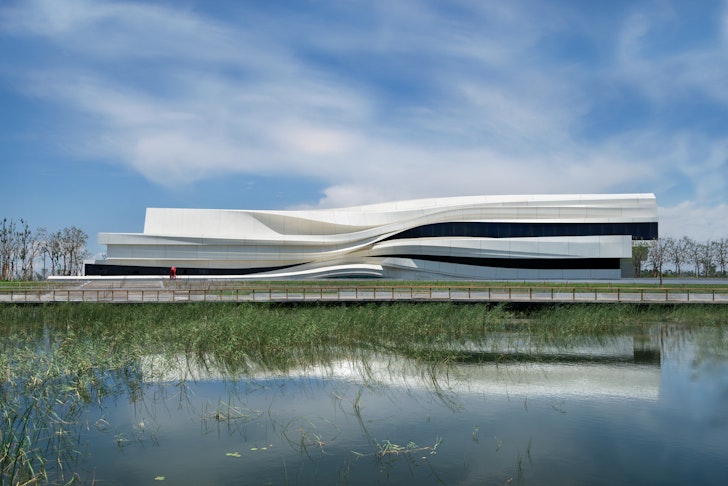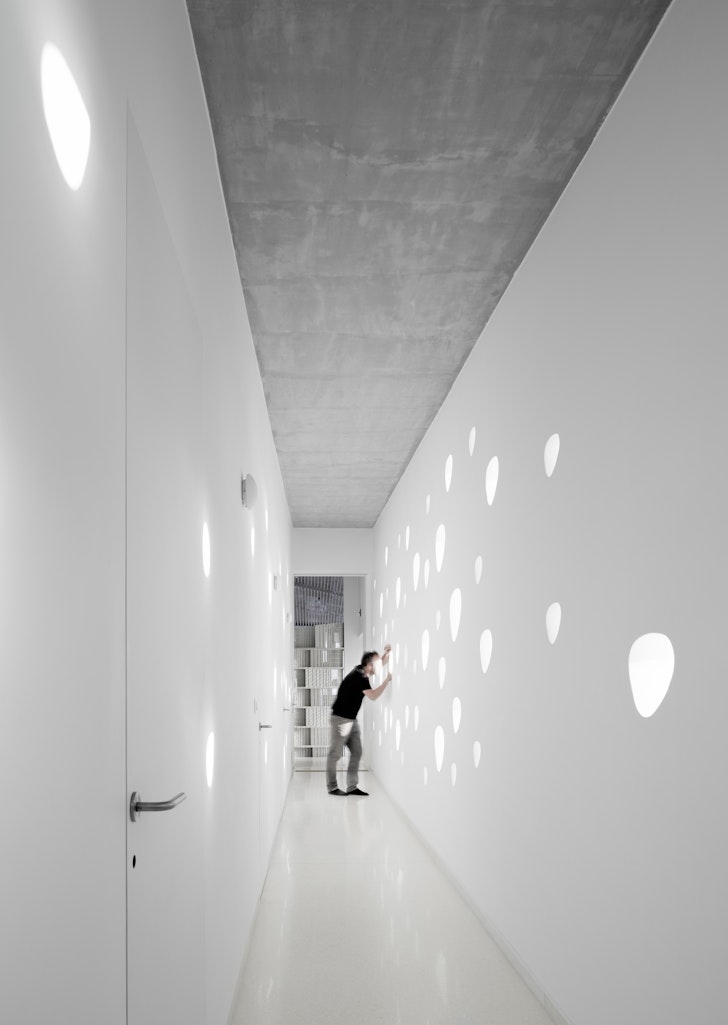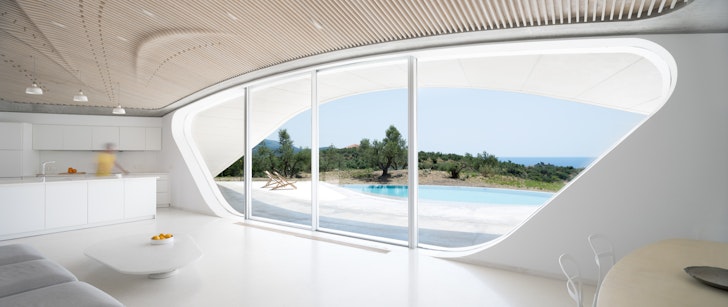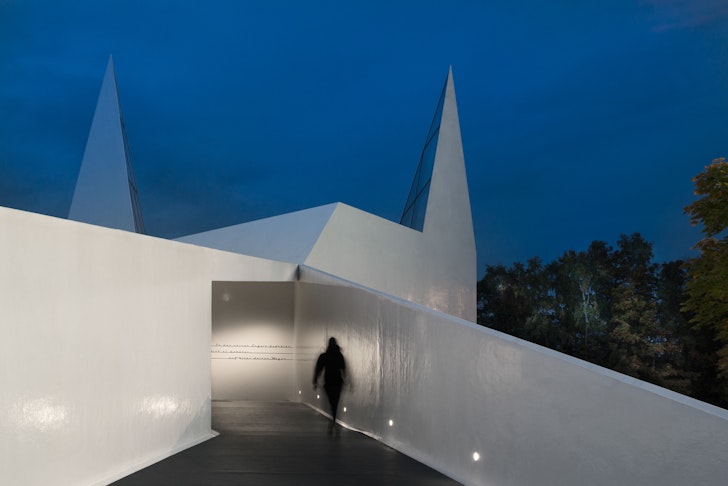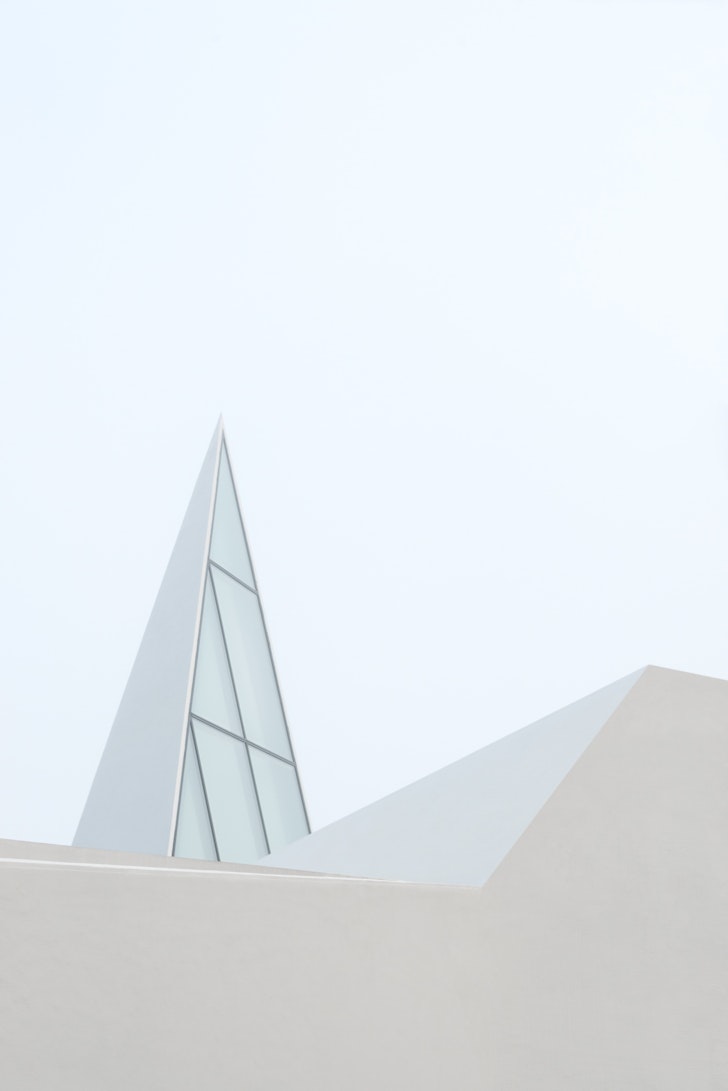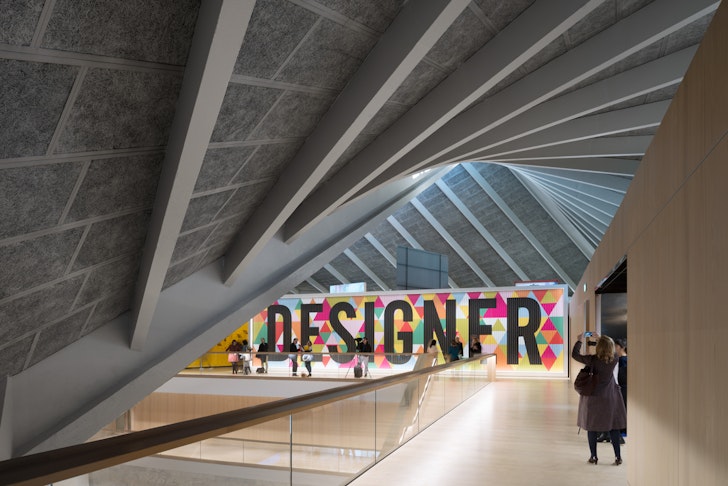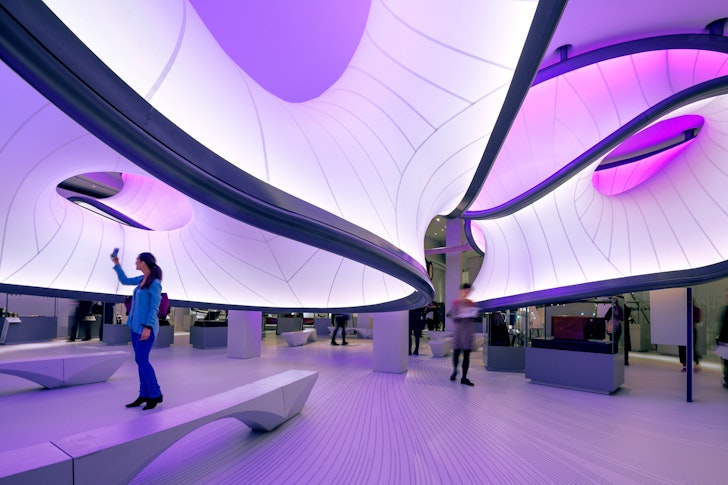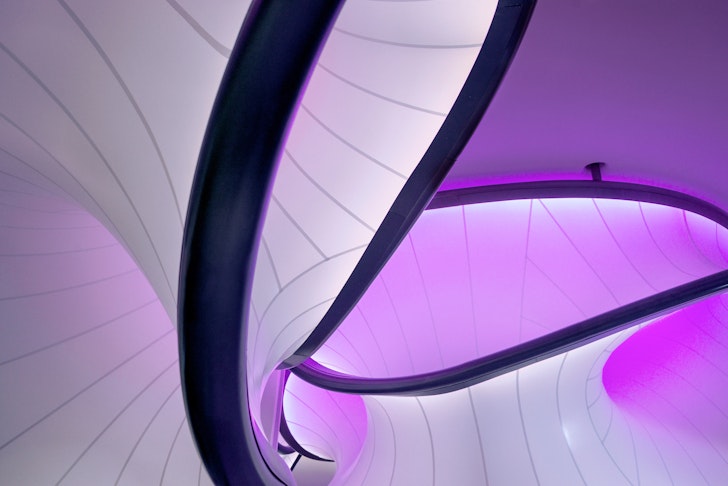
In Focus is Archinect’s recurring series dedicated to profiling the photographers who help make the work of architects look that much better. What has attracted them to architecture? How do they work? What type of equipment do they use? What do they think about seeing their work in blogs?
For this installment, we interviewed Studio NAARO in London founded by Freya Najade and Marcela Spadaro.
What is your relationship with architecture?
Marcela Spadaro: I studied Architecture and Urbanism in Argentina and following my studies I moved to London to work as an architect with Zaha Hadid. Zaha was an incredible experience that lasted 10 years and taught me not only about architecture, but also -by giving me the opportunity to work on projects in so many different parts of the world- it taught me a lot about working & collaborating with other creatives internationally. It’s fantastic to be able to use these skills now in a very different context with NAARO, where we are dedicated to document contemporary architecture around the world. I have also taught Architecture and have been an invited critic and lecturer in architecture schools across Europe and Latin America. So architecture has been a passion of mine for many years now.
Freya Najade: My relationship to architecture has come through photography. My background is in Documentary Photography and prior to forming NAARO I have been interested in the documentation of architecture mostly in connection with its social environment. With NAARO I continue to look at both the social and built environments, however architecture has shifted to the center of the documentations. I love this new focus – to be completely immersed in a space and to pay attention to the smallest detail but also to make sense of it as a whole and then to translate these perceptions into images that hopefully allow others to experience a slice of that space without being there. I really like to explore my surroundings taking pictures and being now able to investigate architecture in this way is very exciting for me.
What drew you to architecture, as a photographer?
FN: For both Marcela and I our passion for architectural photography began with NAARO. We had both been very much drawn to each other’s work and when I received a commission from an architect to photograph one of their recently completed buildings, it seemed like a great opportunity for us to bridge our different expertise and to apply them to the project. We both enjoyed that first collaboration so much that the idea of forming NAARO emerged and since then we have worked on a lot of architectural documentations together.
Describe how you work… who are your clients?
MS: Our clients are mostly architects, however we also work with magazines and publishers who approach us to acquire our images. The architectural firms we work with are of very different profile, from practices that are mainly focused on large-scale projects such as office buildings in the middle of the city, to practices that work on very small installations and objects -and lately because of our drone photography we have also been approached to photograph landscape projects. This diversity of scales and projects is really exciting for us, as it allows us to think and work differently every time. In particular, in the last couple of years we have very much enjoyed working with a generation of young talented architects that push the boundaries of architecture through their work, raising questions that are important to us such as the way in which we live and how to make architecture more sustainable (through engineering & material optimization or the application of the logics of natural systems to architecture); among these architects are Lassa Architects, Marc Fornes & TheVeryMany, ecoLogicStudio, we architech anonymous and Achim Menges.
Do you mostly work in a specific region? What is your travel schedule like?
MS: Since the beginning of NAARO our aim has been to document contemporary architecture worldwide and we remain wishing to not be confined to a specific region. So far we have been very lucky to have the opportunity of working in very different contexts such as France, China, Germany, Kazakhstan, Greece, Taiwan, Denmark and the UK, to name some. In terms of our travelling schedule, this really changes very much depending on the commissions that we have and our commitments in London, where our studio is based and where we also teach architectural photography. For example the last 3 months have been very hectic in terms of travelling but we expect a quieter time in the month ahead; but we never know really!
What is your goal when capturing buildings in photographs?
FN: An important goal for us every time we photograph is to be able to identify and create key images that we feel convey the project we are documenting at its best. We distinguish this approach from the one that aims to take a lot of photographs of a building, covering all possible angles. We believe in creating fewer images that capture and communicate what is unique and exciting about a building. In this process the ‘location scouting’ we carry out at the beginning of each photo-shoot is crucial, as it is normally during this fresh look at the building that we are able to identify these images. Another very important goal for us is that we are able to fulfill our clients’ expectations and vision with regards to the photography of their buildings, which tend to be different from architect to architect. So prior to our photo-shoots we spend time understanding what these expectations may be, by either having a conversation with the architect, looking at how they have approached the photography of other projects in the past, going over the existing project material such as renders, or even at times doing a site-visit together with the client before the shoot.
What are your thoughts about including people in your photos? Is it important to photograph a building in use, or by itself?
MS: Generally we feel that including people in images is as important as capturing buildings by itself, and in an ideal scenario we would try to achieve both when documenting a project. In architecture the human figure has traditionally been used in drawings to indicate the scale of a building, how big the building is in relation to the figure. In recent years and in particular in relation to avant-garde contemporary built architecture -where for example traditional doors of 2m height may be missing- the human figure becomes relevant in photography partly with the same purpose: to give the viewer a sense of the scale of a building. In addition to this, when these kind of avant-garde spaces -often referred to as self referential and formalistic- are portrayed being used and enjoyed by many people, these images become a sort of conveyor of the project’s success. For this reason, having their projects portrayed with people is an aspect generally valued by most architectural practices building large-scale projects today, and in particular public buildings.
What are your favourite pieces of equipment?
FN: So far we have worked with Nikon and Canon equipment, both of which we very much like for different reasons. However we have recently acquired a CANON 5D Mark IV which we are completely in love with! The image quality is simply stunning and also features like wireless connectivity to a smart device and an amazing touch focusing screen make the photo shoot itself even more fun. The Canon tilt and shift 17mm lens is also a great piece of equipment for its fantastic sharpness and overall quality. And of course our drone! Which allows us to capture a dimension of buildings we were not always able to reach before.
Do you work alone?
FN: In general yes, and this is very much possible because of our choice of photography gear and post-production workflow, that allow us to photograph without having to carry a lot of equipment to site. In terms of our partnership Marcela and I sometimes work together and sometimes alone, depending on the commission and complexity of the project. The photo-shoots we are working on together are especially large-scale projects and interiors. In the latter, a great part of our efforts is spent arranging furniture and objects and this is something we like to collaborate on.
How do you feel about seeing your photographs on blogs and websites?
MS: We are always very happy when blogs and websites take an interest in our work by showing our images!



